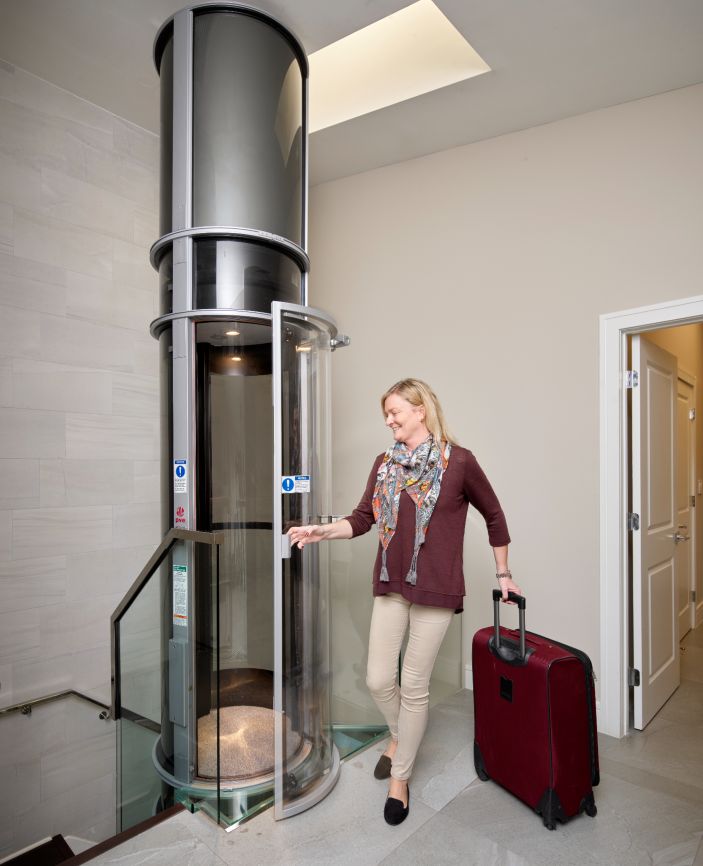Compare Disabled Platform Lifts Prices UK: Affordable Options for Every Demand
Compare Disabled Platform Lifts Prices UK: Affordable Options for Every Demand
Blog Article
Diving Into the Globe of Lifts: Common Issues Dealt With by Various Lift Devices
As we browse with the upright transport systems of contemporary structures, lifts stick out as an indispensable part of our day-to-day lives. Nonetheless, behind their seamless operation exists a globe of elaborate devices that can sometimes encounter challenges. From hydraulic lifts to grip systems and machine-room-less layouts, each lift kind features its set of typical concerns. Comprehending these difficulties is crucial for ensuring the smooth functioning of these essential systems. Let's explore the intricacies that underlie the procedure of elevators and the prospective issues that can emerge, clarifying the detailed web of lift systems.
Hydraulic Lifts
Hydraulic elevators, commonly preferred for low-rise buildings, use fluid stress to manage the movement of the lift cars and truck (lift repair companies). This mechanism involves a hydraulic pump pressing oil right into a cyndrical tube, creating the lift to relocate in the wanted instructions. While hydraulic elevators are recognized for their quiet and smooth operation, they do include their very own collection of common issues
One prevalent issue with hydraulic lifts is oil leakage. The seals in the hydraulic system can break with time, resulting in oil infiltration. This not just produces a mess but can also impact the lift's efficiency if left unaddressed. In addition, issues with the control system, such as defective shutoffs or a malfunctioning pump, can trigger disturbances in the elevator's movement.
Normal maintenance and prompt repairs are important to guarantee the smooth performance of hydraulic elevators. By attending to these usual issues proactively, structure owners can reduce downtime and ensure the safety and efficiency of their vertical transportation system.
Grip Lifts
When considering vertical transport systems in structures, an additional usual kind other than hydraulic elevators is the traction lift. Grip lifts operate making use of a system of ropes and weights that relocate the lift car by gripping onto the hoist ropes. This device permits for smoother and much faster upright transportation compared to hydraulic systems.
Among the common problems encountered by traction lifts is rope wear. The continuous activity of the ropes within the grip system can lead to damage gradually, potentially causing the lift to breakdown or come to be unsafe for use. Regular examinations and upkeep of the ropes are important to guarantee the lift's appropriate functioning and safety and security.
Another issue that grip lifts may run into is connected to the control system. Issues with the control system can result in problems such as erratic movement, hold-ups in response times, and even total shutdowns. Routine testing and upkeep of the control system are critical to stop such issues and guarantee the lift's reliability.
Machine-Room-Less (MRL) Elevators

One of the essential parts of MRL elevators is the portable gearless traction equipment that is set up within the hoistway. This device successfully drives the lift car without the requirement for large equipment discovered in typical grip elevators. Furthermore, MRL lifts commonly utilize a weight system to stabilize the cars and truck, more enhancing their power performance.
In spite of their benefits, MRL elevators may face obstacles connected to repair and maintenance as a result of the restricted space for devices setup. Availability for servicing components within the shaft can be restricted, requiring specialized training for service technicians. Correct upkeep timetables and regular assessments are important to make sure the ongoing smooth operation of MRL lifts.
Overloading and Weight Limitation Issues
Are elevators outfitted to handle excess anonymous weight tons efficiently and securely? Overwhelming and weight limitation issues are essential concerns in lift operations. Elevator manufacturers style lifts with particular weight abilities to make sure traveler safety and equipment longevity. Going beyond these weight limits can cause numerous problems, consisting of mechanical failings, delays, and security risks.
When elevators are strained, it puts extreme strain on the motor, cords, and other elements, possibly creating malfunctions or malfunctions. Safety and security mechanisms such as sensors and overload sensors remain in location to stop lifts from relocating if they spot excess weight. Additionally, going beyond weight restrictions can result in enhanced power intake and damage on the lift system.
To reduce overwhelming concerns, building managers ought to prominently display weight limits in elevators and inform occupants on the importance of adhering to these limitations - lift repair companies. Routine maintenance checks by certified technicians can additionally help make certain that elevators are running within secure weight parameters. By addressing overloading and weight limit issues proactively, building proprietors can improve elevator security and performance
Electric System Failures
Exceeding weight limitations in elevators can not only result in mechanical issues however also potentially add to electric system failures within the lift infrastructure. Electrical wikipedia reference system failures are a critical concern in lift operation, as they can trigger unforeseen shutdowns, malfunctions, or also safety risks. One common electrical issue is the getting too hot of elements because of extreme current flow triggered by straining the lift past its ability. This can lead to damage to the circuitry, control, or electric motor systems, causing costly repair work and downtime.
Regular maintenance and inspections are essential to recognize and deal with prospective electric issues promptly, guaranteeing the secure and efficient operation of read this elevator systems. By sticking to weight restrictions and carrying out routine electric system checks, building owners can mitigate the threat of electrical failings in lifts.
Verdict

Hydraulic elevators, typically favored for low-rise buildings, utilize fluid pressure to regulate the movement of the lift auto.When considering vertical transportation systems in structures, an additional common type aside from hydraulic lifts is the traction elevator. Traction elevators run making use of a system of ropes and counterweights that move the elevator vehicle by clutching onto the hoist ropes. Unlike typical lifts that call for a separate machine space to house the devices, MRL elevators integrate many of the parts within the shaft, removing the demand for a specialized device space.In conclusion, lifts deal with common issues such as hydraulic malfunctions, grip system failings, and electric system issues.
Report this page